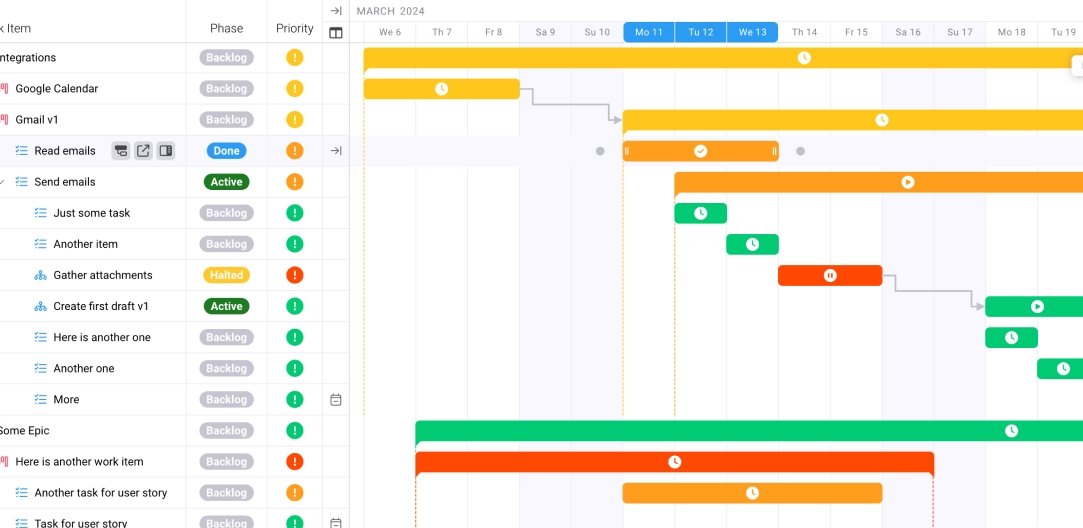
Stopping Profit Leakage: 7 Ways PSA Software Transforms Agency Financial Health
Key takeaways:
Every professional services agency faces an uncomfortable truth: you're likely losing money without even knowing it. The culprit? Profit leakage—those invisible revenue drains that slowly erode your bottom line through unbilled hours, scope creep, and inefficient processes. PSA software has emerged as the critical solution for agencies seeking to plug these costly gaps and transform their financial performance. By addressing the systemic issues that cause revenue erosion, PSA software empowers agencies to capture every billable moment, streamline operations, and maximize profitability in ways that traditional project management tools simply cannot achieve.
The Hidden Crisis: Understanding Agency Profit Leakage
Revenue leakage represents a massive yet often overlooked threat to agency profitability. Recent studies indicate that 42% of companies experience revenue leakage, with businesses typically losing between 1% to 5% of their annual earnings to these unnoticed financial drains. For professional services firms operating on already tight margins, this seemingly small percentage can mean the difference between thriving and merely surviving.
The problem extends far beyond simple accounting errors. Revenue leakage in agencies manifests through manual billing processes, unbilled overtime, excessive discounting, and inaccurate time tracking. These issues compound over time, creating a cascade of financial inefficiencies that can devastate an agency's profitability. When you consider that agencies can lose up to 5% of their annual revenue through these leaks, the urgency of implementing effective solutions becomes crystal clear.
The impact on professional services organizations is particularly severe. Unlike product-based businesses with predictable inventory costs, agencies sell time and expertise—intangible assets that are notoriously difficult to track accurately. Without proper systems in place, billing inefficiencies and manual processes create opportunities for revenue to slip through the cracks unnoticed. This challenge becomes even more complex when managing multiple projects, clients, and team members simultaneously.
1. Automated Time Tracking: Capturing Every Billable Moment
The foundation of agency profitability lies in accurate time tracking, yet manual timesheets remain one of the biggest sources of revenue leakage. Professional services firms using PSA software see a 25 percentage point increase in average utilization rates, demonstrating the transformative power of automated time capture. This dramatic improvement stems from the elimination of forgotten hours, approximated entries, and the natural human tendency to underreport time spent on creative thinking and problem-solving.
Modern PSA software addresses this challenge through intelligent automation that captures time in real-time, eliminating the guesswork and memory lapses that plague end-of-week timesheet completion. By automating time tracking, agencies can reduce invoicing errors by 25% while gaining complete visibility into how every hour is spent. This granular data not only ensures accurate billing but also provides invaluable insights into project profitability and resource utilization patterns.
The psychological aspect of time tracking cannot be ignored. Creative professionals often hesitate to log brainstorming or conceptual work, viewing it as non-productive time. PSA software removes this subjective judgment by automatically capturing all work-related activities, ensuring that the true cost of delivering exceptional creative work is reflected in client invoices. This comprehensive approach to time tracking helps agencies identify and bill for previously unbilled hours that directly impact profitability.
2. Real-Time Budget Monitoring: Preventing Project Overruns
Budget overruns represent one of the most painful forms of profit leakage, often discovered only after significant resources have been consumed. Agencies using PSA software report improvements in project margin visibility, enabling them to identify potential overruns before they impact profitability. This proactive approach to budget management transforms how agencies deliver projects and maintain healthy margins.
Traditional project management often relies on periodic budget reviews, creating dangerous blind spots between checkpoints. PSA software provides continuous, real-time monitoring that alerts project managers the moment a project begins trending toward budget overage. These platforms offer automated alerts and visual dashboards that make budget variances immediately apparent, enabling swift corrective action before minor issues become major financial problems.
The integration of financial data with project execution creates unprecedented transparency. Teams can see exactly how their time impacts project profitability, fostering a culture of financial awareness throughout the organization. This visibility leads to better resource allocation decisions and helps agencies maintain their target margins even when facing unexpected project challenges or scope changes.
3. Scope Management: Converting Creep into Revenue Opportunities
Scope creep stands as one of the most insidious profit killers in the agency world. Research shows that nearly 40% of agencies exceed their budgets due to scope creep, yet many continue to absorb these additional costs rather than billing for extra work. PSA software transforms this challenge into an opportunity by providing the tools and visibility needed to identify, track, and monetize scope changes as they occur.
The psychology of client relationships often prevents agencies from addressing scope creep effectively. Account managers want to maintain positive relationships and may feel uncomfortable pushing back on "small" requests. However, PSA software provides objective data that removes emotion from these conversations, making it easier to demonstrate when additional work falls outside the original agreement. This data-driven approach transforms potentially awkward conversations into professional discussions about project value and fair compensation.
Modern PSA software goes beyond simple tracking by enabling instant change orders and automated billing adjustments. Agencies can now capture scope changes in real-time and immediately generate proposals for additional work, ensuring that every hour of extra effort translates into additional revenue. This systematic approach to scope management not only protects margins but also sets clearer boundaries and expectations with clients, ultimately leading to healthier, more sustainable relationships.
According to recent agency studies, 78% of agencies rarely or only sometimes charge for scope creep, representing millions in lost revenue across the industry. By implementing PSA software with robust scope management capabilities, agencies can recapture this lost revenue while maintaining strong client relationships through transparency and clear communication.
4. Intelligent Resource Allocation: Maximizing Billable Utilization
Resource utilization directly impacts agency profitability, yet many firms struggle to optimize how they deploy their talent. The average advertising agency maintains a utilization rate of just 60%, leaving significant revenue potential untapped. PSA software addresses this challenge through intelligent resource management that ensures the right people work on the right projects at the right time.
The complexity of managing multiple projects, varying skill sets, and competing deadlines makes manual resource allocation nearly impossible to optimize. PSA platforms leverage AI and machine learning to forecast resource needs and automatically suggest optimal team configurations, maximizing billable hours while preventing burnout. This intelligent approach considers factors like skill matching, availability, project profitability, and even employee development goals.
Beyond simple scheduling, modern PSA software provides predictive analytics that help agencies anticipate resource bottlenecks before they occur. These systems can identify patterns in resource utilization and project demand, enabling proactive hiring decisions and more accurate project timeline commitments. The result is a more efficient operation that captures more billable hours without overworking team members.
Professional services firms implementing PSA software see utilization improvements that translate to significant profit increases, with some organizations reporting that just a 1% increase in utilization can boost operating profit by 20%. This dramatic impact underscores the importance of intelligent resource management in driving agency financial health.
5. Automated Invoicing: Accelerating Cash Flow
Invoice management represents a critical yet often neglected aspect of agency financial health. Manual billing processes not only consume valuable administrative time but also introduce errors that delay payment and strain client relationships. PSA software revolutionizes this process through automation that ensures accurate, timely invoicing while dramatically reducing the administrative burden on agency teams.
The traditional invoicing workflow—compiling timesheets, calculating rates, applying markups, and generating invoices—can take days or even weeks to complete. This delay directly impacts cash flow, forcing agencies to wait longer for payment on work already delivered. PSA software automates this entire process, transforming approved timesheets into client-ready invoices instantly, reducing the invoice cycle from weeks to minutes.
Accuracy improvements prove equally valuable. Automated billing systems eliminate manual calculation errors and ensure consistent application of contracted rates, reducing disputes and accelerating payment approval. These platforms also maintain detailed audit trails, making it easy to justify charges and resolve any client questions quickly. The combination of speed and accuracy creates a virtuous cycle of improved cash flow and stronger client relationships.
The financial impact extends beyond simple efficiency gains. Agencies using automated invoicing through PSA software report significant reductions in days sales outstanding (DSO), meaning they get paid faster for their work. This improved cash flow provides greater financial flexibility, enabling agencies to invest in growth initiatives rather than struggling to meet payroll during slow payment periods.
6. Comprehensive Project Analytics: Data-Driven Profitability
Knowledge truly is power when it comes to agency profitability, yet many firms operate with limited visibility into their project economics. PSA software delivers real-time business intelligence that transforms raw data into actionable insights, enabling agencies to identify profit leaks, optimize pricing, and make strategic decisions based on actual performance rather than intuition.
Traditional project post-mortems often occur too late to impact outcomes, providing lessons learned that may or may not be applied to future work. PSA software changes this paradigm by providing continuous performance monitoring throughout the project lifecycle. Agencies can track key metrics like project margins, realization rates, and resource efficiency in real-time, enabling mid-course corrections that protect profitability.
The depth of analytics available through modern PSA software extends far beyond simple project tracking. These platforms can identify patterns across clients, project types, and team members, revealing insights like which services generate the highest margins, which clients consistently cause scope creep, and which team combinations deliver the best results. This intelligence enables agencies to make strategic decisions about service offerings, client relationships, and operational improvements.
Market research indicates that the PSA software market is expected to reach $25.25 billion by 2030, driven by organizations recognizing the competitive advantage that data-driven decision making provides. Agencies leveraging these analytics capabilities report improved win rates, higher margins, and better client retention—all contributing to stronger financial performance.
7. Seamless Integration: Creating a Unified Financial Ecosystem
The final piece of the profit protection puzzle involves breaking down the silos that fragment agency operations. Professional services automation platforms integrate seamlessly with existing accounting, CRM, and collaboration tools, creating a unified ecosystem where financial data flows automatically between systems. This integration eliminates duplicate data entry, reduces errors, and provides a comprehensive view of agency financial health.
Manual data transfer between disparate systems creates numerous opportunities for revenue leakage. Studies show that spreadsheet errors alone can cause losses in the billions due to misplaced decimals, incorrect formulas, or hidden data. PSA software eliminates these risks by automating data flow between systems, ensuring that time tracked translates accurately into invoices, and invoices reconcile perfectly with accounting records.
The benefits of integration extend beyond error reduction. When PSA software connects with CRM systems, agencies gain complete visibility into the client lifecycle, from initial proposal through project delivery and ongoing relationship management. This comprehensive view enables better forecasting, more accurate project estimation, and improved client retention strategies—all contributing to long-term financial stability.
Integration capabilities also future-proof agency operations. As new tools and technologies emerge, PSA software with robust API capabilities can adapt and incorporate these innovations without disrupting existing workflows. This flexibility ensures that agencies can continue to evolve their tech stack while maintaining the financial controls necessary for profitability.
Measuring Success: KPIs That Matter
Implementing PSA software is just the beginning; measuring its impact ensures continuous improvement and maximum value realization. Key performance indicators like utilization rates, project margins, and realization rates provide quantifiable evidence of improvement, enabling agencies to track their progress in eliminating profit leakage.
Utilization rate improvements often provide the first tangible evidence of PSA software impact. Agencies typically see utilization increases of 15-25% within the first year of implementation, translating directly to increased revenue without adding headcount. Project margin visibility enables better pricing decisions and resource allocation, while improved realization rates—the percentage of billable work actually invoiced—demonstrate the elimination of previously unbilled work.
The true measure of success, however, lies in sustainable profitability improvement. Agencies successfully implementing PSA software report not just short-term gains but fundamental transformations in how they operate. These firms develop data-driven cultures where financial awareness permeates every level of the organization, from creative teams understanding their impact on project margins to executives making strategic decisions based on comprehensive analytics.
Beyond financial metrics, successful PSA implementations also improve employee satisfaction and client relationships. Teams spend less time on administrative tasks and more time on creative work, while clients benefit from greater transparency and more predictable project outcomes. These qualitative improvements, while harder to measure, contribute significantly to long-term agency success and growth.
Future Considerations: The Evolution of Agency Financial Management
The landscape of agency financial management continues to evolve, with emerging technologies promising even greater capabilities for protecting and enhancing profitability. Artificial intelligence and machine learning are beginning to power predictive analytics that can forecast project risks and opportunities with unprecedented accuracy. Agencies that invest in PSA software today position themselves to leverage these advances as they become available.
The shift toward subscription and retainer-based pricing models requires sophisticated financial management capabilities that traditional tools cannot provide. PSA software adapts to these new business models, providing the flexibility to manage diverse pricing structures while maintaining visibility into profitability across all client relationships. This adaptability ensures that agencies can evolve their business models without sacrificing financial control.
Looking ahead, the integration of PSA software with emerging technologies like blockchain for contract management and augmented analytics for decision support will further enhance agencies' ability to protect and grow their profits. The agencies that thrive will be those that embrace these technologies early, using them to create competitive advantages in efficiency, accuracy, and client service.
The competitive landscape demands nothing less than excellence in financial management. With 73% of companies lacking automated revenue assurance processes, agencies that implement comprehensive PSA software solutions gain a significant competitive advantage. This technology gap represents both a challenge and an opportunity for forward-thinking agencies ready to transform their financial health.
Conclusion
The battle against profit leakage requires more than good intentions—it demands systematic solutions that address the root causes of revenue erosion. PSA software provides the comprehensive toolkit agencies need to identify, eliminate, and prevent the various forms of profit leakage that plague professional services organizations. From automated time tracking that captures every billable moment to intelligent analytics that drive strategic decision-making, these platforms transform how agencies manage their financial health.
The evidence is overwhelming: agencies implementing PSA software see dramatic improvements in utilization rates, project margins, and overall profitability. By addressing the seven critical areas outlined—time tracking, budget monitoring, scope management, resource allocation, invoicing automation, project analytics, and system integration—agencies can plug the profit leaks that have silently drained their financial resources for years. The question isn't whether your agency can afford to invest in PSA software, but whether you can afford not to. The path to sustainable profitability and growth starts with taking control of your agency's financial operations today.
Frequently Asked Questions
What exactly is profit leakage in agencies?
Profit leakage refers to the unintentional loss of revenue that occurs when agencies fail to capture, track, or bill for all the value they deliver to clients. This includes unbilled hours, scope creep, pricing errors, and inefficient processes that erode margins.
How quickly can agencies see ROI from PSA software implementation?
Most agencies begin seeing measurable improvements within 3-6 months of implementation, with significant ROI typically achieved within the first year through increased utilization rates and reduced unbilled hours.
Can small agencies benefit from PSA software, or is it only for large firms?
PSA software benefits agencies of all sizes. Small agencies often see even greater relative improvements because they typically have more manual processes and fewer resources to waste on inefficiencies.
How does PSA software differ from regular project management tools?
Unlike basic project management tools, PSA software integrates financial management, resource planning, time tracking, and billing into a unified platform specifically designed for professional services firms' unique needs.
What's the biggest mistake agencies make when implementing PSA software?
The most common mistake is treating PSA software as just another tool rather than a catalyst for operational transformation. Success requires commitment to process improvement and change management across the organization.
How does PSA software help with client relationships?
PSA software improves client relationships through greater transparency, more accurate project delivery, better communication about scope changes, and professional handling of financial matters.
What should agencies look for when selecting PSA software?
Key considerations include ease of use, integration capabilities with existing tools, scalability, industry-specific features, quality of support, and demonstrated ROI from similar agencies.
Can PSA software help with remote and hybrid team management?
Yes, modern PSA platforms are cloud-based and designed for distributed teams, providing visibility and coordination regardless of where team members work.
How does PSA software handle different billing models?
PSA software accommodates various billing structures including hourly, fixed-fee, retainer, and value-based pricing, with the flexibility to mix models across different clients and projects.
What's the typical investment required for PSA software?
Costs vary based on agency size and chosen features, but most solutions offer subscription models that scale with your business, making them accessible even for smaller agencies.









